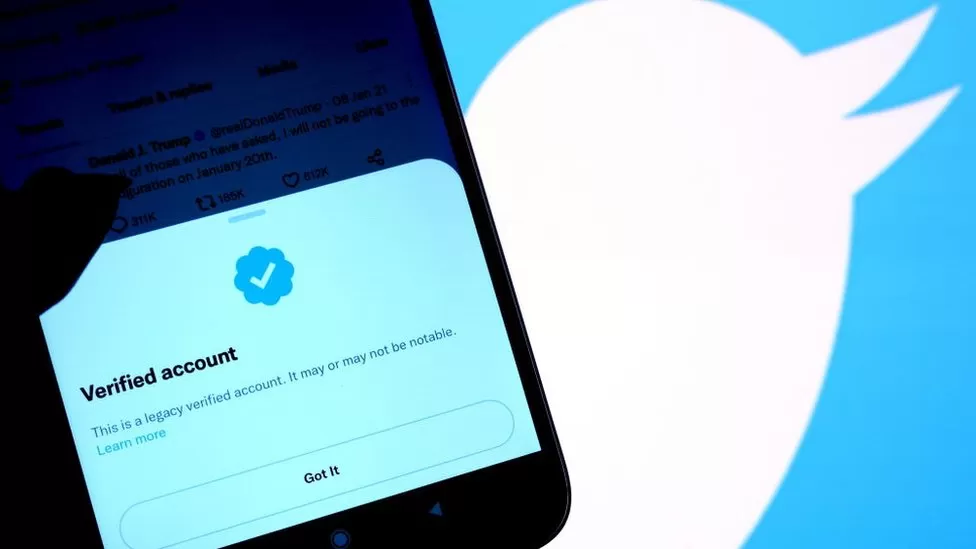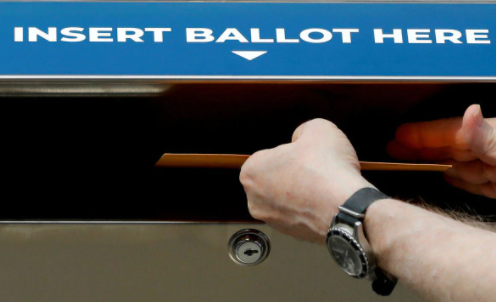The 200-year-old hidden languages of dating
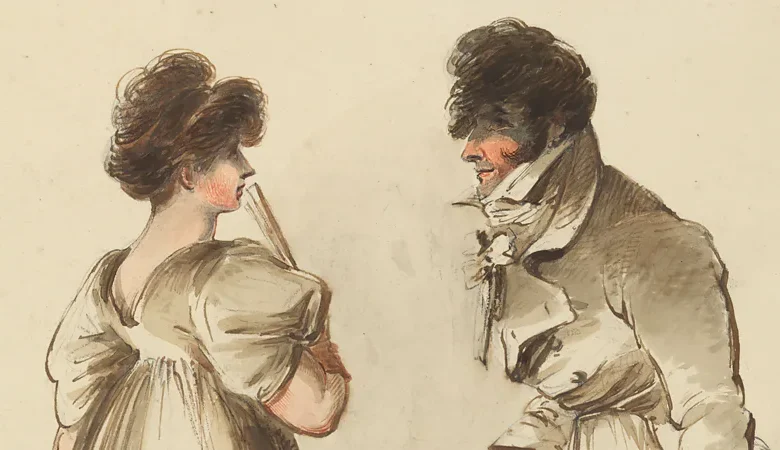
From Regency-era “fan flirting” to coded gifts, people have perfected the art of discreetly signalling their love over many centuries. Here’s what it reveals about our quest for love.
If you visit the Richelieu wing of the Louvre in Paris, you might meet the gaze of a former Queen of England. Her hands, adorned with expensive rings, are clasped together. She smiles ever so slightly in her reserved, composed way. Jewels and gems cover her headdress as well as the rich red and gold fabrics of her puffed-sleeve gown. A small cross hangs below her neck. There is no doubt from the painting that she was destined to turn heads.
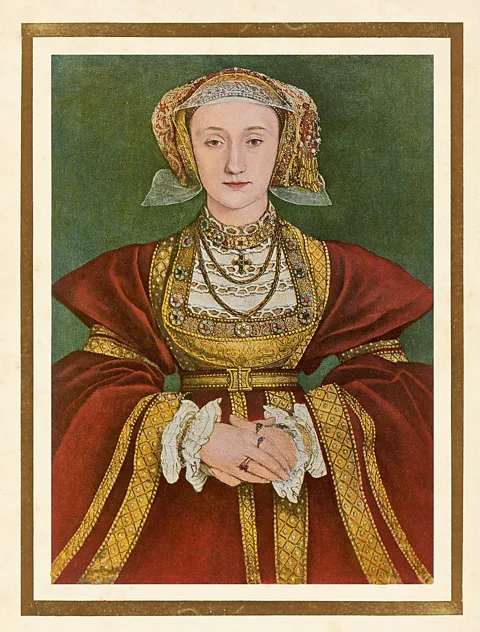 Getty Images
Getty ImagesSo arresting was Hans Holbein the Younger’s betrothal portrait of Anne of Cleves, it caused one of the most powerful people in the world, Henry VIII, to enter an engagement with her in 1539. The painting was described by Henry’s ambassador in Cleves as “very lively”, implying that it was an accurate portrayal. However, some historians have accused Holbein of exaggerating her beauty. Either way, Anne and Henry’s first encounter in person was incredibly awkward, with historical accounts suggesting that neither was attracted to the other. What followed was an unconsummated marriage before the couple were granted an annulment in July 1540 – some may say, a lucky escape for Anne.
While presenting a potential future Queen in portrait form might initially seem far removed from our modern-day efforts of finding love in a world of digitised dating services, courtship portraits are, actually, back. Dating apps, used by 30% of adults in the US as of 2022, require users to make crucial preliminary judgements based on little more than a photograph and perhaps a few reassuring words from friends.
As the majority of modern dating interactions begin from behind a screen, online users are exposed to hundreds of potential partners sorted by an algorithm. But, dating today and courtships hundreds of years ago suggests that words have not always been central, or necessary, for finding love.
Some of the hidden languages or visual signals of attraction have remained remarkably similar over centuries, while others have faded into oblivion. What do these non-verbal codes reveal about how we perceive romantic relationships – and might understanding them, help us find true love?
“Fan flirting”
Let’s begin with a period in a history known for celebrating romantic love and courtship. The Regency era, loosely defined as the decades around 1800, offered women the opportunity to be wooed – courted – but also, to actively go out into the marriage market.
In novels by Regency era writers such as Jane Austen, characters often pursue marriage for financial or social prospects – but love tends to win by the end. Marrying for love became a “widely celebrated ideal during the 18th Century”, says Sally Holloway, research fellow at Oxford Brookes University and author of The Game of Love in Georgian England. People emphasised finding love before marriage, as opposed to developing love for someone later, “not dissimilar from how you would assess compatibility with a partner today,” she says.
A love interest might develop at one of society’s social events. Holloway says that there was fun to be had in subtle flirtation in these public settings – for example, there was a “language of fans” during the period, “but it was more a bit of fun than a serious method of communication”.
In 1797, the designer Charles Francis Bandini created a fan on which he printed a coded alphabet in tiny, ornate lettering – to allow women to send messages from across the room. The fan, called Fanology or the Ladies Conversation Fan listed different hand positions to indicate each letter in a similar fashion to semaphore, which was a method of communicating employed mostly by sailors using coloured flags.
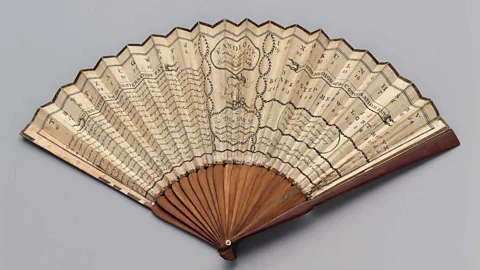 The Oldham Collection, MFA Boston
The Oldham Collection, MFA BostonAnother fan, entitled The Ladies Telegraph, for Corresponding at a Distance from 1798, was similar. “The primary use of the fan between lovers would have been as a much less explicit means of flirtation, accompanied by longing looks, fluttering eyelashes and loving glances,” says Holloway.
Fan signals were useful at crowded and noisy dances, or where discretion was required. But in closer quarters, men and women could use scents to “stimulate and strengthen feelings of love and sexual desire,” says Holloway. Liquid scents were also applied to love letters in order to entice a lover.
Holloway says that men during the Regency era typically presented women with a wide range of gifts, from flowers to miniature portraits, to show their affection and suitability as a partner. “Couples would check that their disposition and outlook on life were suitably similar by exchanging books as tokens and underlining the passages that they most agreed with,” says Holloway. “In their letters, they discussed their hopes and fears, their moral views, what they hoped to find in marriage, and worked to build a closer emotional bond.”
In return, women “typically presented men with handmade items such as embroidered ruffles and waistcoats to indicate their domestic skill and time invested in a suitor, and pressed flowers such as violets, which symbolised their modesty, truthfulness and faithful love,” says Holloway.
The two most symbolically important gifts were locks of hair – a physical piece of the loved one’s body which would outlast their time on Earth – and a ring, which symbolised their hand in marriage.
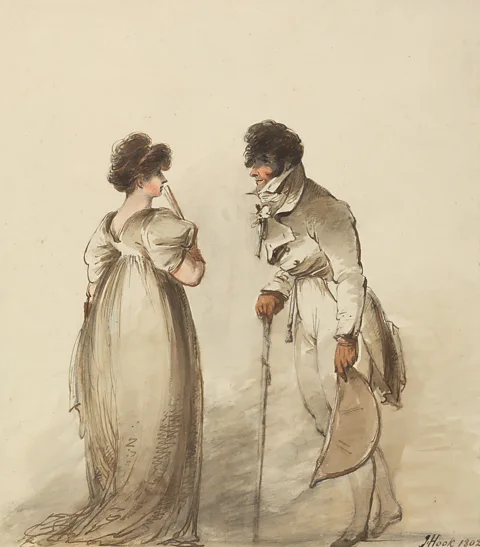 Getty Images
Getty ImagesWhile the language of fans may no longer be in use, according to Holloway, there are some similarities to the way couples still use gifts and messages to connect in the modern dating world.
“All of these rituals helped to create a sense of intimacy and emotional closeness in a similar way to how modern couples might exchange a flurry of gifts, texts, emails, plan dates and days out, and spend time together as a way to ascertain their compatibility,” Holloway says.
As photography became more accessible and widely distributed during the Victorian period, more people had the chance to see likenesses of celebrities and even royalty for the first time. Friends and family could also exchange mementos of each other. And soon the technology sweeping through British Victorian society found a romantic purpose: the cartes de visite – a portrait photograph around 9cm by 6cm, pasted onto a piece of card that could be sent to prospective lovers.
To some Victorians, cartes de visite were almost like a fetish object – John Plunkett
Cartes were cheap and easy to exchange, so in their own way, a portrait could go viral like an image might go viral online today. People posted adverts requesting an exchange of cartes, and lovers might keep their suitor’s cartes close to them, “almost like a little fetish object,” says John Plunkett, an assistant professor in the department of English at the University of Exeter in the UK.
Originally made famous by Queen Victoria and Prince Albert before becoming more accessible to the middle and upper classes, the cartes were “part of an individual’s construction of themselves in relation to a wider collective identity,” wrote Plunkett in a paper published in the Journal of Victorian culture.
Cartes provided some people with their first and perhaps only opportunity of having their photo taken. As with modern dating apps, a carte could allow them to make an impactful first impression. “You’re going to dress up in your Sunday best,” says Plunkett. People included something of their personality, showing themselves reading, or posed in a way that showed how dominant or demure they were. “It gives you a chance to make a statement about who you are. You’re going to make yourself look more socially mobile and higher status,” says Plunkett.
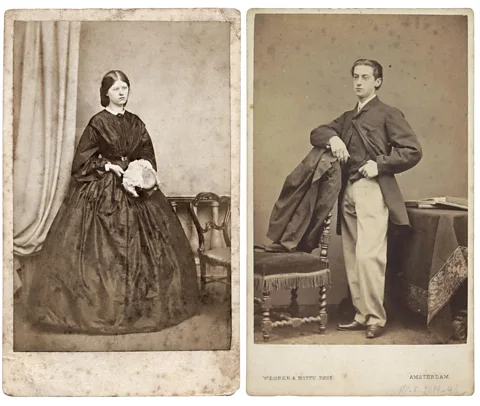 Alamy
AlamyIt became fashionable to turn the cartes of one’s closest social connections into collages. An art style developed around posing friends in unusual and creative ways, such as assembled in a drawing room or even as unfortunate victims in a spider’s web. The aim was to save these mementos in a scrap book and express something about how closely one’s friends were held.
In many cartes, some of which can be viewed at the V&A museum in London, UK, people posed with objects that represented wealth, such as art or sculptures – and even pets.
Plunkett explains that the use of props helped people to remain still while photographers took their pictures, since those early photographs required much longer exposures than photos do today – but also to incorporate “the sense of a grand background” or to show off your profession, for example.
“It’s all about putting on an appearance and thinking about what’s the vision of yourself you want to project… [like an] Instagram or Twitter profile… You’re going to choose something that shows off a certain version of yourself,” Plunkett says. Similarly, on dating apps today, people use backgrounds and props including exotic landscapes or animals to reflect their interests and how they like to see themselves.
Romance in Berlin nightclubs
By the end of the Victorian period, social etiquette was beginning to relax, and daters found new places to seek partners. Dancehalls played increasingly upbeat music late into the night. Jaunty ragtime dances gave way to jazz in the 20th Century. It became more socially acceptable for single women to go to bars and clubs with friends and meet people there. With new dating spaces came new ways to signal interest.
In 1920s Berlin nightclubs, gifts from trinkets to cocaine were sent to love interests through a system of tubes
Around this time, in the 1920s, Berlin became the poster city for ultra-modern night life. Some Berlin clubs were “immense, multi-level, with movable floors and even water for water ballet shows,” says Jennifer Evans, a professor of 20th Century social history at Carleton University in Ottawa, Canada, and author of Life Among the Ruins: Cityscape and Sexuality in Cold War Berlin.
Technology of the time enabled dancers to flirt in busy clubs. The Berlin nightclub Residenz-Casino, known familiarly as the Resi, became famous for offering night-clubbers the means to contact each other using either a telephone or an elaborate system of pneumatic tubes from their table. Like the tubes used in internal office mailing systems, department stores and banks to send money from the shop floor to the back office, a message could be stuck inside a metal canister and pushed into a tube, where it was sucked by a vacuum to its destination.
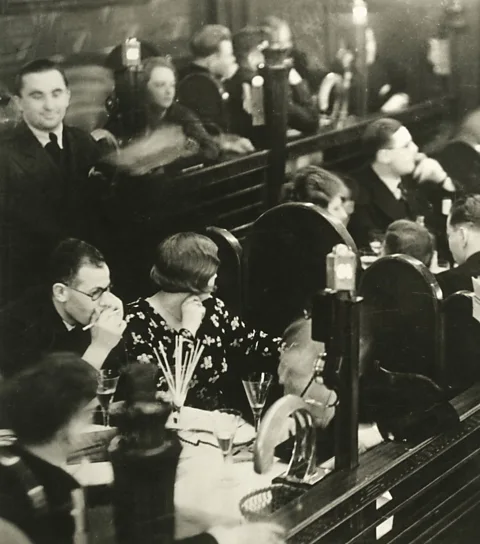 Alamy
AlamySomeone could write a message on paper and send it to a switchboard, where an operator would read to ensure it was polite (a bit like, an early example of content moderation on social media today) before diverting it to the recipient’s table. Alongside messages, gifts “from cigarettes to small trinkets to cocaine” could be bought and sent to the intended love interest, says Evans.
“There must have been something quite scintillating about seeing your person across the room as they received the message, hidden in plain sight,” says Evans. “Their reactions, positive or negative, immediate and unfiltered, enhanced by the sense of fun and frivolity in the room. Maybe we should bring them back.”
The outbreak of World War Two in 1939 spelled the end of this form of social interaction, she says, but some nightclub communication systems lived on in what would become West Berlin after the war. The Resi itself re-opened in 1951.
“I suppose we are constantly re-inventing ways to talk to one another, expressing our desires, in these demi-monde [fringe or clandestine] spaces,” says Evans. “It seems to say a lot about who we are as humans and how badly we seek connection.”
Secret signals in LGBTQ+ culture
Same-sex relationships have long had to rely on alternative modes of communication because of the history of oppression and marginalisation that has targeted people in LGBTQ+ communities. Historically, secret signals allowed LGBTQ+ people to find partners while trying to stay safe from hostility, violence and repressive laws. Same-sex relationships were illegal in much of Europe until the 1960s and 70s, and 2000s in the US.
The green carnation, for example, originally became popular as a symbol with a hidden meaning by gay writer Oscar Wilde. In 1892, Wilde instructed a handful of his friends to wear them on their lapels for the opening night of his play Lady Windermere’s Fan. When asked what it meant, Wilde (allegedly) said, “Nothing whatsoever. But that is just what nobody will guess.”
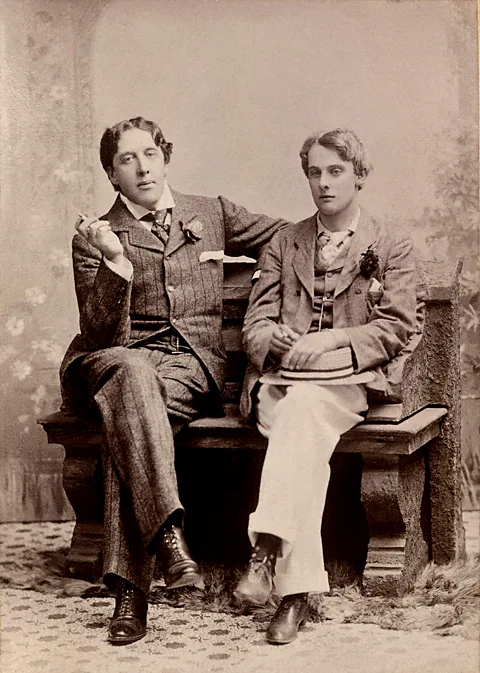 Alamy
Alamy“This sums up so many of these queer symbols – they have to be hidden hints and nods without overtly saying what they mean,” says Sarah Prager, speaker and author of Queer, There and Everywhere: 27 People Who Changed the World and other books about LGBTQ+ history. “This can be a challenge for historians,” adds Prager. “There might never be full confirmation or separation from legend with some of these symbols, because the whole point is to be able to communicate in secret in times of oppression.”
Other flowers and plants became associated with the LGBTQ+ community. “Besides the green carnation, one of the oldest examples of queer floriography is violet and lavender. […] The colours purple, lavender [and] violet, have all been associated with queerness for centuries,” says Prager. “We think this dates back to Sappho, the Greek poet of the 6th Century BCE, [who] wrote about women loving other women and is one of the earliest recorded examples of queerness between women.”
There’s a long history to secret writing, long before sexting or slipping into someone’s DMs – Jennifer Evans
Jewellery has long been used as a visual expression and communicator of sexual identity in queer communities. “I have tattoos, earrings, clothing, that signal my queerness so that it makes it easier for me to feel in community with people,” Prager says. “The feeling that I get when I see somebody else showing one of these symbols is an instant recognition of community, safety, kinship.”
Through the musical and sexual liberation of the Swinging ’60s and ’70s, queer culture found a new voice. There were increasingly spaces for the LGBTQ+ community to seek love. In Germany, “gay men used the Contacts Desired pages of magazines like Der Kreis and the later gay magazines like Him,” says Jennifer Evans. “There, they’d advertise for ‘friendship’ or companionship… or sometimes, more brazenly for photo exchanges.”
The test of time
The desire to see a sweetheart’s likeness, and playfully connect through coded gestures and implied meaning, has continued to the present day – whether through dating app profiles, curated online presences, pings, likes, swipes and compliments.
“There’s a long history to secret writing, long before sexting or slipping into someone’s DMs as they say,” says Evans. She points out that flirting and the early stages of courtship have long been associated with the development of new technologies that allow people to communicate hidden thoughts and feelings, even in plain sight: “From symbols like a coloured handkerchief hanging from a back jean pocket in gay cruising, to shorthand emojis and acronyms in sexting.”
Sometimes, she adds, this furtiveness serves a purpose in keeping people safe – such as when being public about engaging in certain sexual practices could put one in danger. But more generally, she says, it is the sheer thrill of developing shared intimacies.
Codes, rituals and carefully composed images are all “part of the game”.
Source: bbc.com



